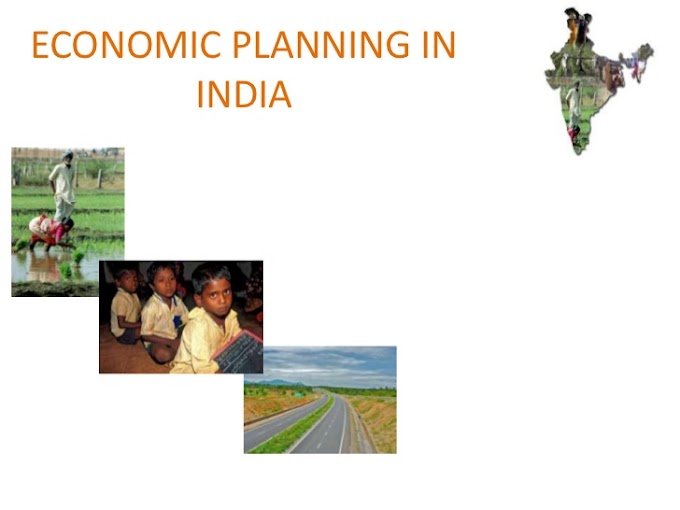Union and its Territory
India comprises 28 States and 7 Union Territories.
States are: Andhra Pradesh, Assam, Arunachal Pradesh, Bihar, Chhattisgarh, Goa, Gujarat, Haryana, Himachal Pradesh, Jammu and Kashmir, Jharkhand, Karnataka, Kerala, Madhya Pradesh, Maharashtra, Manipur, Meghalaya, Mizoram, Nagaland, Orissa, Punjab, Rajasthan, Sikkim, Tamil Nadu, Tripura, Uttarakhand, Uttar Pradesh and West Bengal.
Union Territories are: Andaman and Nicobar Islands, Chandigarh, Dadra and Nagar Haveli, Daman and Diu, National Capital Territory of Delhi, Lakshadweep and Puducherry.
Name and territory of the Union
- Article 1 of our constitution says: India, that is Bharat, shall be a union of states.
- The word 'Union' was preferred to 'Federation' because of certain advantages. Union of States means that the Union of India is not a result of an agreement by the States to join in a federation and the Federation not being the result of an agreement, no state has the right to get separated from it.
- The Union Territories are not included in the "Union of States", whereas the expression "Territory of India" includes not only the States, but also the Union Territories and such other territories as may be acquired by India.
- The States and the territories thereof shall be as specified in the First Schedule.
- The State of Jammu and Kashmir has been given special status under article 370, which became operative on Nov 17, 1952. The separate Constitution of the State was drafted by the Constituent Assembly of Jammu and Kashmir and became effective on Jan. 26, 1957.
New States
According to article 2, Parliament may by law admit into the Union, or establish, new States on such terms and conditions as it thinks fit.
Formation of new States and alteration of areas, boundaries or names of existing States.
Under Article 3, the Constitution empowers the Parliament to form a new State by separation of territory from any State or by uniting two or more States or parts of States or by uniting any territory to a part of any State.
The Constitution further states that Parliament has the power to increase or diminish the area of any State or to alter the boundaries or names of any State.
Procedure:
- A Bill giving effect to any or all the changes stated above can be introduced in either house of the Parliament, only on the recommendation of the President.
- If such a Bill affects the boundary or name of the State, then the President, before introducing it in the Parliament, shall refer the Bill to the State Legislature concerned for its opinion, fixing a time limit within which an opinion may be expressed by the State Legislature. The President may extend the time limit so specified.
- If the State Legislature fails to express an opinion within the stipulated time limit then it is deemed that it has expressed its views. If it submits its views within the period so specified or extended, the Parliament is not bound to accept or act upon the views of the State Legislature. Further, it is not necessary to make fresh reference to the State Legislature every time an amendment to the Bill is proposed and accepted.
- The Bill is passed with simple majority.
- However, in the case of Union Territories, it is not necessary to obtain the views of legislatures of Union Territories before a Bill affecting their boundaries or names is introduced.
Article 4 provides that any such law may amend the First and Forth schedules of the constitution without going through the special formalities required by Art 368.
Reorganization of States
Before independence, about 600 princely states acceded to India due to the efforts of India’s first Home Minister Sardar Vallabhai Patel except Hydrabad where forces were applied and in Junagarh referendum was held.
Efforts were made to make states homogeneous in Cultural and linguistics. Contituent assembly appointed S.K. Dhar Commission in November 1947 to study the issue of reorganization of states on linguistic basis. The Dhar Commission recommended linguistic basis. The congress in its Jaipur session appointed a three member committee also popularly known as JVP committee after the names of its members- Jawaharlal Nehru, Vallabh Bhai Patel and Pattabhi Sitaramaya. The committee rejected language as the basis for reorganization of States.
Andra Pradesh was the first state created on linquistic basis in 1953 after the death of Sriramulu.
The Government of India set up the States Reorganization Commission in 1953 under Fazal Ali (chairman), K.M. Panicker and Pt. H.N. Kunzru. The commission in its report submitted in 1955, accepted the language as the basis for reorganization of states.
Advantages
- Since the constitution of India recognised the principle of diversity which may be geographical, linguistic and cultural, smaller States can help to pro-mote diversity and strengthen the federal principles.
- Administratively smaller States can be better man-aged because of small area and people can also approach administration easily as compared to larger states.
- Socio-economically, a particular area has its characteristic socio-economic problems. In smaller States, remedial measures can be introduced by way of Regional Planning in some particular areas which has already been accepted as an effective instrument in the planning process in India.
- Healthy comptition will develop among States for development if there are smaller States. States of Punjab and Haryana are its example.
- In smaller States, regional equality can be maintained better than the larger States.
Disadvantages
- (1) Tendencies of separatism might adversely affect the unity and integrity of the country.
- (2) Creation of smaller States require setting up more infrastructure and more political and administrative staff which would cause excessive burden on public expenditure.
- (3) Centralised Economic planning for balanced regional development can be difficult in the area which is divided into various States.
- (4) More States might cause more inter-state disputes.
The New States created after 1950
Andhra Pradesh
Created by the State of Andhra Pradesh Act, 1953 by carving out some areas from the State of Madras.
Gujarat and Maharashtra
The State of Bombay was divided into two States, i.e., Maharashtra and Gujarat by the Bombay (Reorganization) Act, 1960.
Kerala
Created by the State Reorganization Act, 1956. It comprised Travancor and Cochin areas.
Karnataka
Created from the Princely State of Mysore by the State Reorganization Act, 1956. It was renamed Karnataka in 1973.
Nagaland
It was carved out from the State of Assam by the State of Nagaland Act, 1962.
Haryana
It was carved out from the State of Punjab by the Punjab (Reorganization) Act, 1966.
Himachal Pradesh
The Union Territory of Himachal Pradesh was elevated to the status of State by the State of Himachal Pradesh Act, 1970.
Meghalaya
First carved out as a sub – State within the State of Assam by 23rd Constitutional Amendment, 1969. Later, in 1971, it received the status of a full – fledged State by the North – Eastern Areas (Reorganization) Act, 1971.
Manipur and Tripura
Both these States were elevated from the status of Union Territories by the North – Eastern Areas (Reorganization) Act, 1971.
Sikkim
Sikkim was first given the Status of Associate State by the 35th Constitutional Amendment Act, 1974; It got the status of a full State in 1975 by the 36th Amendment Act, 1975.
Union Territories
- Refers to areas directly administered by the Central Government.
- They are administered by the President through an administrator appointed by him with a suitable designation.
- In Delhi, Daman – Diu, Dadra and Nagar Haveli and Pondicherry – Lieutenant Governor.
- Andaman & Nicobar and Chandigarh – Chief Commissioner.
- Lakshadweep – Administrator
- There are Legislative assemblies and council of ministers in Pondicherry & Delhi.
- Total no. is 6 + 1 at present – Andaman & Nicobar Island, Chandigarh, Dadra & Nagar Haveli, Delhi (National Capital Territory), Daman – Diu, Lakshadweep & Pondicherry.
- According to the 69th Amendment Act, 1991, Union Territory of Delhi shall be called the National Capital Territory and it shall have a Legislative Assembly to which members shall be directly chosen by the people.
- The Assembly shall make laws on the matters enumerated in State List (except on matters relating to Public order, Police, Land).
Union State Relations
A. Legislative Relations
The Constitution divides the subject into the :
- Union List : (97 subjects)
- State List : (66 subjects)
- Concurrent List : (47 subjects)
Parliament has exclusive power on Union list (contains subjects like defence, foreign affairs, currency, communication, citizenship, inter – state trade & commerce, banking, atomic energy, posts and telegraphs, etc).
The State List contains subjects on which ordinarily the States alone can make laws. These include public order, police, administration of justice, prisons, local government, agriculture, public health and sanitation, irrigation, etc. but under certain conditions the Constitution authorizes the Central Government to extend its jurisdiction over matters formally included in the State List. In fact, when a proclamation of emergency is in operation, Parliament can legislate on matters enumerated in all the three lists.
Both Parliament & State Legislature can legislate on subjects contained in the concurrent list, (contains subjects like criminal and civil law, forest, education, marriage & divorce, drugs, trade unions, labour welfare, newspapers, books & printing press, population control and family planning, etc).
Residual powers (i.e. subjects not included in any of the lists) rest with union government.
Article 200 directs the Governor to reserve a Bill passed by the State Legislature for the consideration of the President, if in his opinion, if passed into law, would derogate the powers of the High Court.
B. Administrative Relations
The Indian Constitution has a strong bias towards the Centre to make it strong. The Central administration prevails over the State administration.
The executive powers of the State should be so exercised as to ensure compliance with the laws of the Union Parliament and not impede or prejudice the executive power of the Union.
If the State does not comply with the directives of the Centre, the latter may invoke Art. 356 and take – over the administration of the State to itself.
C. Financial Relations
States are greatly dependent on the Centre. Constitution provides inadequate sources of revenue to States. Therefore, they have to depend on the Centre for subsidies & contributions.
Union exercises control through Comptroller arid Auditor General of India, who audits State accounts. Appointment of Finance Commission by President every 5 years also adds to it.
Scheme of Distribution of Revenue
Article 268 provides the scheme of the distribution of revenue between the Union and the States. The States possess exclusive jurisdiction over taxes enumerated in the State List
The Union is entitled to the proceeds of the taxes in the Union List. The Concurrent List includes no taxes.
The Constitution mentions four categories of Union taxes which are wholly or partially assigned to the States :
- Duties levied by the Union but collected and appropriated by the States : Stamp duties and duties of excise on medicinal and toilet preparations mentioned in the Union List.
- Taxes levied and collected by the Union but assigned to the States : Duties in respect of succession to property other than agricultural land, estate duty in respect of property other than agricultural land, terminal taxes o goods or passengers carried by railways, sea or air, taxes on railway fares and freights, taxes on stock exchange other than the stamp duties, taxes on inter – State consignment of goods, and taxes on the sale or purchase of the newspapers and on advertisements therein.
- Taxes levied and collected by the Union and distributed between the Union and the States : Income tax not including Corporation Tax.
- Taxes levied and collected by the Union and may be distributed between the Union and the States : Customs and Excise duties other than those on medicinal and toilet preparations as are mentioned in the Union List.
COMMISSIONS on State Reorganisations
- In 1948, Justice S.K. Dhar Commission.
- In December 1948, J.V.P. (Jawaharlal Nehru, Sardar Patel, P. Sitaramyya) Commission was set up by GOI.
- In 1954, GOI appointed first States Reorganisation Commissioin under the chairmanship of Justice Fazal Ali. Hidayanath Kunzru and Sardar K.M. Pannikar were its members. It recommended for setting up 16 States and 3 UTs.
 Introduction
Introduction
Directive principles of state policy are mentioned under Part IV (Articles 36 to 51) of the Constitution.
They tell about the AIMS that the state should strive to achieve. This part of the Constitution is described as the ‘Conscience of the Constitution’.
Their idea has been incorporated from the Constitution of Ireland. They are a unique blend of socialistic, liberal, democratic and Gandhian Principles. They are, not enforceable in court of law, but very important for day – to – day administration of the country.
In State of Tamilnadu Vs L. Abu Kavur Bai case in 1984, the Supreme Court held that although directive principles are not enforceable, yet the court shouldn’t avoid them.
Classification and Enumeration
The Directive Principles can be classified under four principal groups. The first group deals with general principles of social policy.
The second with the principles of administrative policy.
The third deals with socio – economic rights.
The fourth and last group contains a statement of the International Policy of the Indian Republic.
Directive Principles of State Policy
Article 38: To secure and protect a social order which stands for the welfare of the people.
Article 39: The State will, in particular, direct its policy towards securing :
Adequate means of livelihood to all citizens
- A proper distribution of the material resources of the community for the common good.
- Prevention of concentration of wealth to common detriment.
- Equal pay for equal work for both men and women.
- The protection of the strength and health of the workers and avoiding circumstances that force citizens to enter avocations unsuited to their age or strength.
- The protection of childhood and youth against exploitation or moral and material abandonment.
Article 40: To organize village Panchayats as units of self – government.
Article 41: To secure the right to work, education and public assistance in cases of unemployment, old age, sickness, etc.
Article 42: To secure just and humane conditions of work and maternity relief.![]()
Article 43: To secure work, a living wage, a decent standard of life, leisure and social and cultural opportunities for people, and in particular to promote cottage industries.
Article 44: To secure a uniform civil code applicable to the entire country.
Article 45: To provide, within 10 years from the commencement of the Constitution, free and compulsory education to all children up to the age of 14.
Article 46: To promote with special care the educational and economic interests of the weaker sections of the people, especially the Scheduled Castes and Scheduled Tribes.
Article 47: To secure the improvement of public health and the prohibition of intoxicating drinks and drugs.
Article 48: To organize cultural and animal husbandry on scientific lines and preserve and improve the breeds and prohibit the slaughter of cows, calves and other milch and draught cattle.
Article 49: To protect all monuments of historic interest and national importance.
Article 50: To bring about the separation of the judiciary from the executive.
Article 51: To endeavor to secure
- The promotion of international peace and security.
- The maintenance of just and honorable relations between nations.
- The settlement of international disputes by arbitration.

Added after 42nd Amendment, 1976
Article 39 (a) : The legal system promotes justice on the basis of equal opportunity and will, in particular, free legal aid by suitable legislation.
Article 39 (f) : The children are given opportunities and facilities to develop in a healthy manner and in conditions of freedom and dignity and that childhood and youth are protected against exploitation and against moral and material abandonment.
Article 43 (a): To secure the participation of workers in the management of undertakings engaged in any industry.
Article 48 (a): To protect the environment and to safeguard the forests and wildlife of the country.
Added after 42nd Amendment, 1978
Article 38 (1) : The State shall, in particular, strive to minimize the inequalities in income and endeavor to eliminate inequalities in status, facilities and opportunities, not only amongst individuals but also amongst groups of people residing in different areas or engaged in different vocations.
Mentioned in Other Parts
Article 350 (a): It is the duty of the officers of concerned states to provide primary education in mother tongue to the people of minorities particularly to the children of minorities’ class.
Article 351: It will be the duty of the Union to spread Hindi language amongst the people of India which will develop our cultural and social element.
Article 355: It will be under consideration to appoint the people of the Scheduled Castes and the Scheduled Tribes in and as Union or State services.





